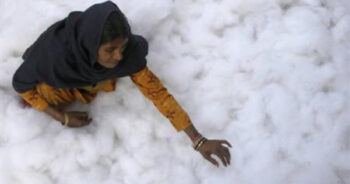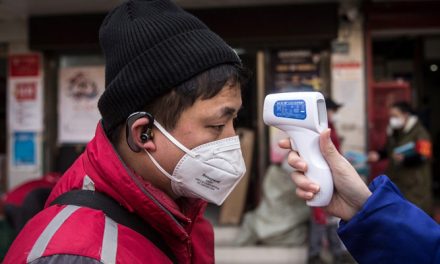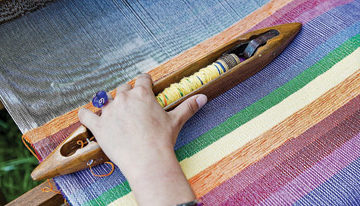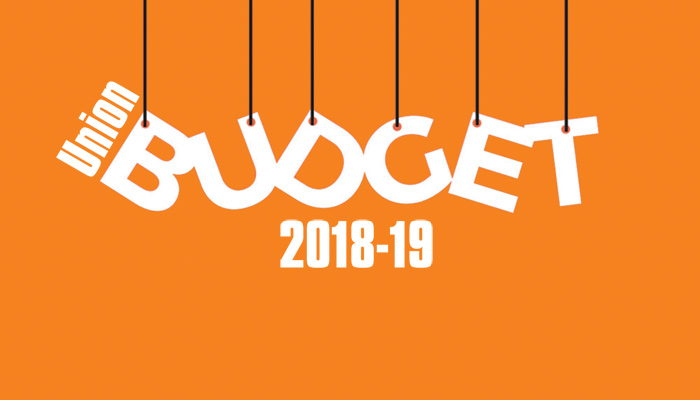 The Indian cotton textile industry has been facing unforeseen crisis from the beginning of the year especially from 1st April 2022 due to abnormal increase in cotton price that was primarily caused by speculation of cotton trading under MCX and 11 percent import duty levied on cotton. The MCX cotton price has been costlier by 40 percent to 60 percent till 31st August 2022 when compared to the New York futures. The removal of 11percent import duty on cotton from 14th April 2022 to 31st October 2022, though gave a sigh of relief, it did not last long as the international and domestic cotton prices started coming down and creating a panic situation in the industry. When several textile mills were attempting to re-negotiate the contract or seek legal remedy for cancellation of contract, the speculation caused by MCX trading made the Indian cotton expensive that enabled the trade to protect their contract. However, the international cotton price continues to be lower by 20 percent to 25 percent that had caused production stoppage to the tune of 30 percent to 40 percent across the cotton textile value chain.
The Indian cotton textile industry has been facing unforeseen crisis from the beginning of the year especially from 1st April 2022 due to abnormal increase in cotton price that was primarily caused by speculation of cotton trading under MCX and 11 percent import duty levied on cotton. The MCX cotton price has been costlier by 40 percent to 60 percent till 31st August 2022 when compared to the New York futures. The removal of 11percent import duty on cotton from 14th April 2022 to 31st October 2022, though gave a sigh of relief, it did not last long as the international and domestic cotton prices started coming down and creating a panic situation in the industry. When several textile mills were attempting to re-negotiate the contract or seek legal remedy for cancellation of contract, the speculation caused by MCX trading made the Indian cotton expensive that enabled the trade to protect their contract. However, the international cotton price continues to be lower by 20 percent to 25 percent that had caused production stoppage to the tune of 30 percent to 40 percent across the cotton textile value chain.
Realizing the urgent cotton issues, the Hon’ble Union Minister of Textiles, Piyush Goyal formed a Textile Advisory Group under the Chairmanship of Suresh. A. Kotak, convened series of meetings for the first time with the Ministry of Agriculture and SEBI and taken numerous corrective measures to bring stability in cotton prices. Consequent to the meeting held by SEBI along with MCX and industry stakeholders on 26thAugust 2022, certain changes were brought in the MCX trading. The MCX cotton price has significantly come down within a week that has softened the domestic cotton price.
In a report, Ravi Sam, Chairman, The Southern India Mills’ Association (SIMA) has appreciated the proactive and bold steps taken by Hon’ble Union Minister of Textiles to control the speculation in the cotton trading by directing SEBI and MCX to bring necessary changes so as to enable the cotton futures trading to benefit all the stakeholders in the cotton textile value chain and protect the jobs of 35 mn people directly employed in the cotton textile value chain and also around 6.5 mn cotton farmers. Ravi Sam has stated that MCX cotton price per bale (of 170 kgs) that prevailed around Rs.50,000/- till the last week of August, has now come down to Rs. 36,480/-, a reduction of around 27 percent. With the early arrival of new cotton and price pressure, the domestic market cotton price has also reduced from the level of Rs.1,00,000/- to Rs.90,000/- per cany (355 kgs), a reduction of around 10 percent.
Ravi Sam has stated that the Indian cotton prices are still higher by 15 percent to 20 percent when compared to the international cotton prices especially the countries like Pakistan and China. He has stated that the domestic price must match with the prices prevailing in the competing countries and the international cotton prices to have a level playing field and enable the Indian cotton textile industry to revive from the unforeseen crisis. SIMA Chief has hoped that with the 8 percent increase in cotton area and numerous steps taken to prevent the infestation of pink boll worm, white fly and curly leaf cotton diseases, the cotton production for the coming season might be comfortable for the industry to bounce back in a short span of time.
SIMA Chief has stated that the cotton requirement by the industry would surpass the production and with the duty-free export of cotton that might encourage 12 percent to 15 percent of good quality raw cotton export from the country during the season resulting in cotton shortage during the off season. He has appealed to the Government to remove 11% import duty to enable the industry to achieve its potential growth rate and sustain its financial viability apart from protecting the jobs of over 35 million people employed in the cotton textile value chain. He has added that the anticipated cotton price even during the peak cotton season would be much higher than the minimum support price and therefore, the duty removal will not affect the farmers. He has stated that the Government could also consider levying the duty only during the peak arrivals of the season (December – March) to avoid recurrence of crisis during the fag end of cotton season 2022-23. He has appealed to the Government to ensure raw material security and ensure availability of quality cotton at an internationally competitive rate by curbing speculation and removing the import duty on cotton.








